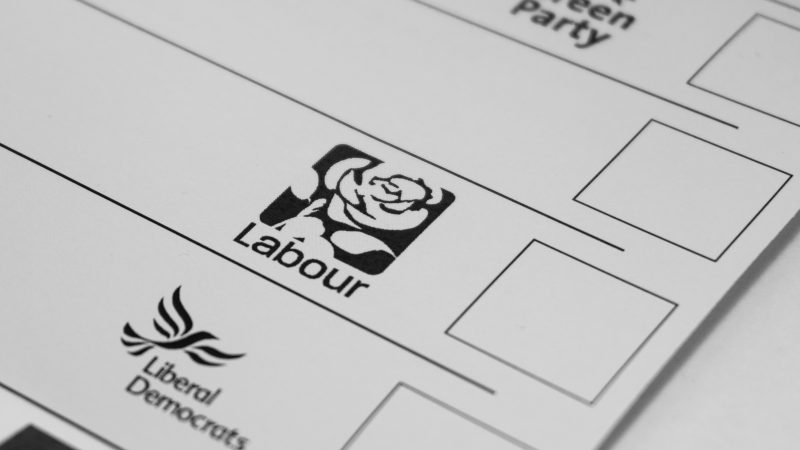
It has been a favourable few weeks for Rishi Sunak. He’s even managed to get through a Budget without sending the gilt market into meltdown. It’s been enough that some commentators have started whispering that the Conservatives might be able to win the next general election after all. The Tory strategy to achieve this is now clear. Firstly, they are pushing a hard line on immigration and culture war issues in order to win back socially conservative but economically left-leaning voters, whose defection from Labour in the 2019 general election played such a crucial role in delivering the Tory landslide. Simultaneously, they are trying to appeal to voters in the middle ground by presenting Sunak as a competent, pragmatic problem-solver who will start to turn the economy around and improve public services by the time of the next election.
Given the extent of the Labour loss at the last election, it is a remarkable achievement that the Conservative commentariat dare only whisper about the possibility of a Tory victory. The work done under Keir Starmer’s leadership to reconnect with the voters who deserted Labour in 2019 means that current polling predicts it would win back every one of the 30 or so so-called ‘Red Wall’ constituencies it lost. But although there is no path to Downing Street that does not go through the Red Wall, winning these seats alone would not be enough to make Labour the largest party in a hung parliament, let alone deliver a majority government.
In the last few days, “Stevenage woman”, a new voter segment that Labour Together has identified as being crucial to Labour’s chances of gaining power, has received widespread coverage in the media. This segment was one of six distinct groups of voters we found, which are clustered around similarities in attitudes, values and level of political engagement. Currently, Labour has a lead in four out of six of these groups, but our new report highlights the two segments that will be the most important to target at the next election. One group – the “patriotic left” – are found throughout the country but form a disproportionately large part of the electorate in Red Wall seats.
These voters will be well known to seasoned politics watchers: older, working class, strongly left on the economy, strongly right on culture and heavily in favour of Brexit. Stevenage woman is a less familiar segment: this is a younger group, disproportionately likely to be women, a quarter of whom are from an ethnic minority, who are most likely to live in a small city or a town and who have middle-of-the-road opinions on both economics and culture. The attitudes of this group are not a million miles away from those held by another of our segments – the “centrist liberals” – although they are more socially conservative and economically right wing. However, they are also more financially insecure and much more politically disengaged; just under half did not vote in the last general election. They are an important group partly because they are so numerous. They are the biggest segment in 430 out of 573 English and Welsh constituencies. Even taking into account the high percentage of non-voters, they form a crucial part of the electorate in Conservative-Labour marginals, including in the 90 or so seats outside the Red Wall that Labour will need to win to get a working majority.
However, voters from the Stevenage woman segment who have switched from the Conservatives since 2019 are less firm in their current support for Labour than more liberal Tory switchers are. This is hardly a surprise, given that Conservative strategists have decided that losing support from liberals by advocating harsh policies on immigration is a price worth paying to shore up their vote among social conservatives. But for those such as Stevenage woman who are unlikely to be moved one way or the other by the culture war, the government will be hoping that small improvements in the economy and public services will either persuade them to consider voting Conservative again or to simply stay at home. This is one of the reasons why Labour must work hard to retain the support of this segment.
Assembling a wide enough coalition to put Labour into power is a daunting task. It will involve winning over a range of different voters with different attitudes and priorities. The offer that we put to the country at the next election must be able to speak both to the patriotic left, with their strong left-wing opinions on the economy and socially conservative opinions on culture, and to Stevenage woman, with her more cautious views on both. Our analysis has shown that voters who are economically insecure are more likely to say they will vote Labour at the moment, but the possibility of a global economic recovery (for which the government will doubtless take credit) means that we cannot rely on the electorate voting against the Tories. We need them to vote for Labour. In the next few months, Labour Together will be using this segmentation to produce reports and analysis to help develop Labour’s pitch to the key voters in our coalition. Our goal is to turn the prospect of a Labour government after the next election from a possibility into an inevitability.




More from LabourList
Letters to the Editor – week ending 18 January 2026
‘Scotland 2026: Labour must frame the choice as between change and another decade of the SNP’
‘We need some light in the darkness’ Labour’s Leadership – a grassroots view